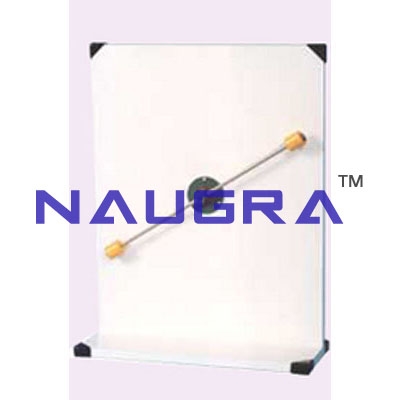- Civil Lab Mechanical Lab Engineering Lab Equipments
- sales@didacticlabequipments.com

CAT NO: DIDACTICNLE-Export-056008
Conservation Of Angular Momentum Engineering Lab Training Systems.
Features
Low cost, effective teaching
Self-contained
Wall mounted
High visual impact
Genuine "hands-on" experience
Three year warranty
Range of Experiments
Used
for demonstration only, no measurements are intended. Demonstrates
basic concepts of conservation of angular momentum through visual
observation
Description
Conservation of linear
momentum is well understood and often demonstrated to students. Equally
important is the conservation of angular momentum. It is not easy to do
meaningful experiments on this, but a highly visual demonstration of
almost dramatic impact is the effect of reducing the radius of a
rotating mass. This is often seen in an ice skater performing a
pirouette. First they spin round on an axis corresponding to their body,
arms outstretched. When they raise their arms above their head, the
increase in spin in considerable. Rather than go to an ice rink,
students can perform this experiments in the laboratory.
A bench
mounted vertical board has a rotating arm along which two weights can be
moved by a pull cord operated by the student or demonstrator.
The
weights are moved to the outer ends of their travel, away from the
centre of rotation. The arm is then spun rapidly by hand, and the
weights pulled towards the centre by the cord.
The resulting increase in angular velocity is considerable.
This
equipment is part of a range designed to both demonstrate and
experimentally confirm basic engineering principles. Great care has been
given to each item so as to provide wide experimental scope without
unduly complicating or compromising the design. Each piece of apparatus
is self-contained and compact. Setting up time is minimal, and all
measurements are made with the simplest possible instrumentation, so
that the student involvement is purely with the engineering principles
being taught. A complete instruction manual is provided describing the
apparatus, its application, experimental procedure and typical test
results.
